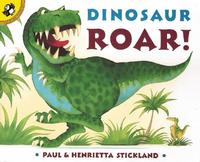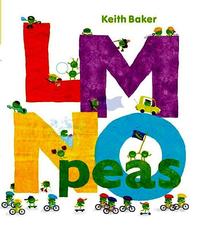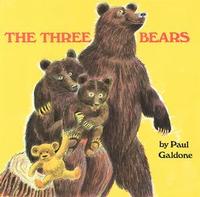Are you trying to raise a reader? Even babies and toddlers who can’t talk yet are learning skills that will make them better and more enthusiastic readers. By inspiring and encouraging imaginative play, your child is wiring his or her brain for phonological awareness (the ability to recognize the differences between sounds), as well for vocabulary (the names of things) and narrative skills (telling a story).
Play, in these terms, means anything from fingerplays to dress-up, puppets to crafts. Whenever you engage your child’s imagination, you are building them a stronger brain. If you can, use the last book you read together as a springboard for play. For example, if you have just read Chicka Chicka, Boom Boom or LMNO Peas, you might pick out a few of the individual letters and ask your child to tell a story about them. “What do you think A is going to tell B tomorrow?” for example, or: “What would happen if, instead of climbing the coconut tree, the letters went to the waterpark (or playground or art museum)?” Depending on how old your child is, you might want to offer prompts like, “If J went down the slide with K, what do you think L would do?” And so on. Another way to play with the alphabet is to sing any kind of alphabet song: “My name is Amy, I’m from Ambler, and I eat Apples,” for example. (These are very useful in the car!!) You don’t need to start with A, either: use the letter of your child’s name, or start with Z, to remind them that the alphabet moves both ways.
Another way to approach play, especially with slightly older pre-readers, is to prompt them with characters and plot, asking them to act out a particular character by themselves or with dolls, puppets, trucks or blocks. This could range from pretending that you and your three-year old are dinosaurs (complete with roars and crawling on all fours) to inviting older siblings to play the role of the three bears while your four-year old puts on his best Goldilocks and tastes everybody’s porridge (or apple sauce or strawberry). Pair any of these with one of Jane Yolen’s How do dinosaurs... series or a simple fairytale retelling.
Fingerplays and action rhymes are great ways to play with babies and toddlers. The next time you pass a train-crossing or ride the subway, try this one:
Choo-choo, choo-choo (rub palms back and forth together)
The train runs down the track . (run fingers down baby’s arm)
Choo-choo, choo-choo (rub palms back and forth together)
And then it runs right back. (run fingers back up baby’s arm to the shoulder or nose)
Remember, it’s never to early to raise a reader! For more great fingerplay and action rhyme ideas, ask your children's librarian or come to a Baby and Toddler Storytime.
Have a question for Free Library staff? Please submit it to our Ask a Librarian page and receive a response within two business days.



